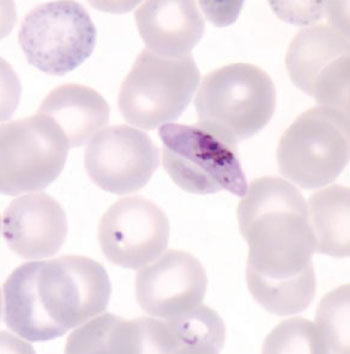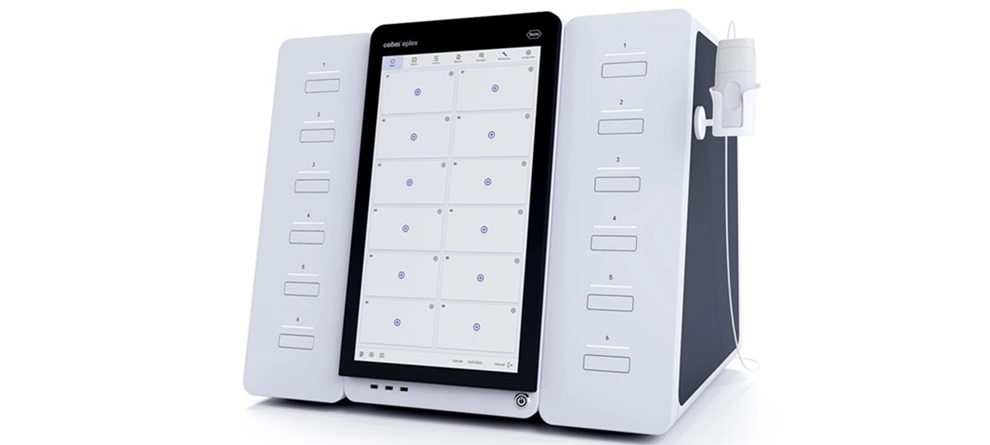Highly Sensitive Method Detects Malaria Parasites
By LabMedica International staff writers
Posted on 19 Mar 2015
A large proportion of asymptomatic malaria infections can only be identified by surveillance with molecular methods, yet these infections also contribute to onward transmission to mosquitoes. Posted on 19 Mar 2015
New molecular assays that take advantage of genes with multiple copies in the parasite genome have been developed that can detect malaria parasites in human blood at very low levels and might be helpful in the campaign to eradicate malaria.

Image: A gametocyte of Plasmodium falciparum in a thin blood smear and also seen are ring-form trophozoites and a red blood cell exhibiting basophilic stippling (Photo courtesy of Dr. Mae Melvin).
An international team of scientists led by those at the Swiss Tropical and Public Health Institute (Basel, Switzerland) compared three methods to detect malaria parasites in 498 samples randomly selected from a malaria survey in Tanzania: light microscopy, the current standard molecular assay, and the new assays. Two quantitative polymerase chain reaction (qPCR) assays were developed for ultra-sensitive detection of Plasmodium falciparum, targeting the high-copy telomere-associated repetitive element 2 (TARE-2, ~250 copies/genome) and the var gene acidic terminal sequence (varATS, 59 copies/genome).
Parasites were detected in 25% of samples by light microscopy, in 50% by the standard assay, and in 58% by the new assays. Compared to the new assays, the current molecular standard assay failed to identify 16% of infections, and at least 40% of those contained parasite gametocytes, the parasite stage that is transmitted when mosquitoes bite an infected person. Standard PCR is widely considered a molecular gold standard of malaria diagnosis complementing light microscopy, the traditional gold standard, yet these results suggest that this notion requires revision.
The new assays detect only the most common malaria parasite, P. falciparum, and while they can use very small blood samples collected in the field, the analysis itself needs to be done in a biomedical laboratory. Nonetheless, because low-density infections without disease symptoms are expected to become increasingly common as countries improve malaria control, ultra-sensitive tools such as these will likely be critical for malaria surveillance and for monitoring the progress of malaria control and elimination programs. The study was published on March 3, 2015, in the journal Public Library of Science Medicine.
Related Links:
Swiss Tropical and Public Health Institute













